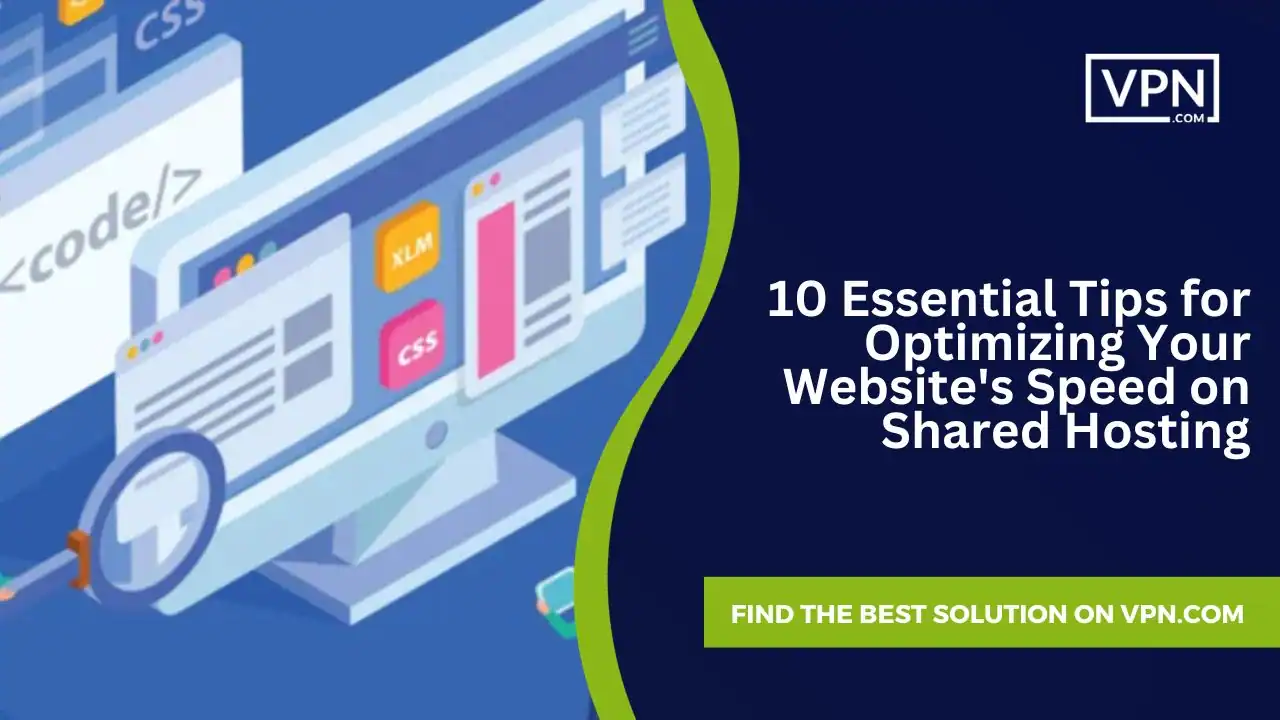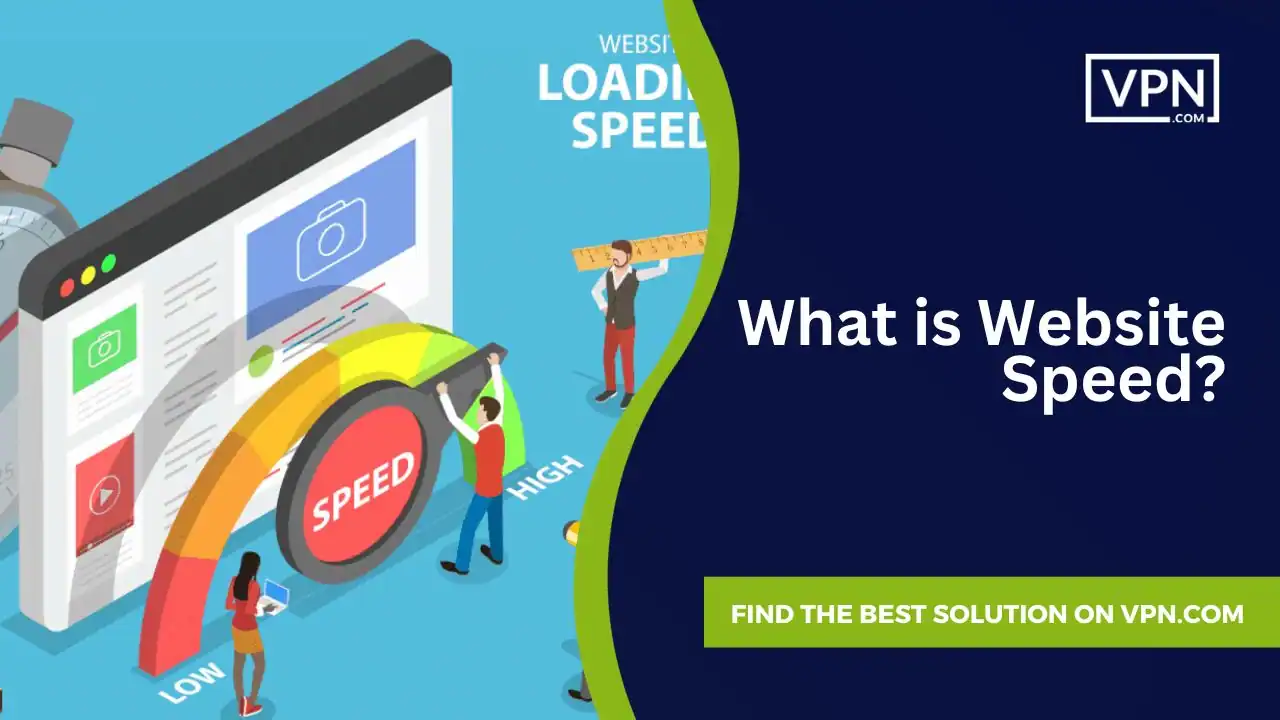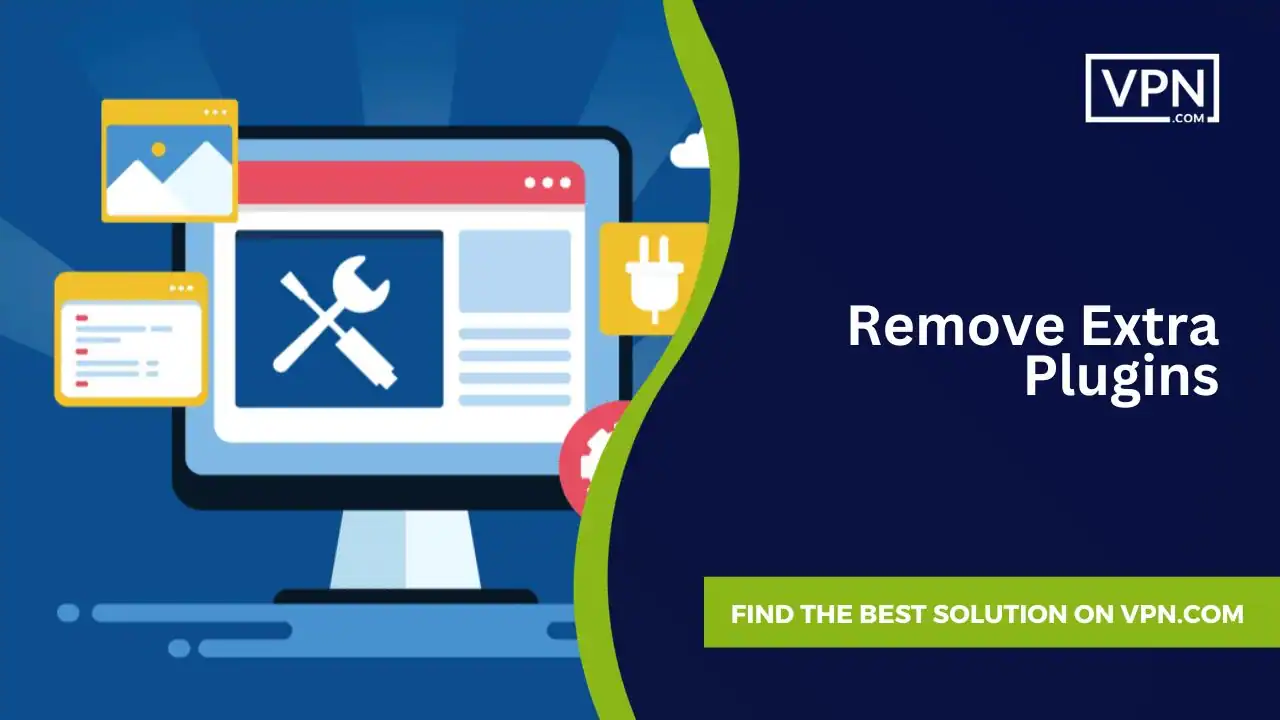Optimize Your Website Speed With Shared Hosting: Best Tips In 2024

Are you sick of the slow downloading speed of your website and want to improve it at any cost? This article is here to solve your problem. Well! There is no doubt that this digital era is continuously disrupting our behavior. Every business is now shifted to the online marketplace and a website works as an entrance for each type of sale and conversion of your online business.
But where does the speed of the website matter? Right at the point when a visitor opens your website to explore it. The speed of the website specifies how much time a user has to invest to perform his desired action on your webpage.
So, acknowledging the significance of how to improve website speed is very important as it may give rise to poor user experience. You must know that Google Pagespeed update takes website speed as one of the best ranking factors.
To skyrocket the sales rate of your services, we have piled up 10 essential tips for optimizing your website’s speed on the best shared hosting for website speed in this article. All these tips and tricks are implemented by SEO experts.
So, you can trust them easily and can witness their wonderful results in just a few days. But before diving into the details of the essential tips and tricks, let’s see what website speed is and which factors affect it the most.
What is Website Speed?

Website speed tells how fast your website responds to a user clicking on your website URL that rechannels him to the homepage.
According to the standards of Google Pagespeed, website speed on the best shared hosting for website speed is an important factor in giving quick access to users to information, products, and services. So, we can say the higher the speed of a website, the higher the number of sales it generates. The further importance of page speed is explained in detail below.
![Optimize Your Website Speed With Shared Hosting: Best Tips In [year] 1 Ultahost](https://cdn.vpn.com/wp-content/uploads/logo-light-en.webp)
Sign Up with our #1 Host
- Starting at $3.29/mo
- 99.99% UPTIME
- 24/7 Live Support
- Money-Back Guarantee
- Ultra-Fast Platform
Why is Page Speed So Important?
Research reveals that the maximum amount of time a user can stay waiting for a website to open before losing focus is between 0.3 to 3 seconds. If your website speed is slow and it takes longer than this to demonstrate important information, the visitor will lose interest and probably close the browser window.
Faster websites will show decreased bounce rates, a higher ranking in the search engine, and higher conversion rates. Due to all these qualities, they will have an overall good user experience.
The outcome is that a slow and sluggish website on the best shared hosting for website speed will make you spend more and damage your brand reputation too. In contrast, improving your website speed will increase organic traffic, and click-through rate, and ultimately generate more sales.
Factors Affecting Website Speed
There can be a lot of reasons why your website load time might be delayed. It can be anything, but the most common reasons are
- Large sized images
- Excessive widgets and plugins
- Surplus use of CSS and JavaScript
- Inferior server/hosting plan
- Not using browser cache properly
- Outdated browsers
- Hyperlinking images and other resources from retarded servers
- Slow internet connection on mobile phones
It represents that there is a proper list of steps you can implement to improve page speed which is explained later in this blog. But before you start fixing speed to enhance website performance, you have to test your webpage loading time.
How can I Check My Website Speed?

Website speed on the best shared hosting for website speed can be tested using different free online tools like GTMetrix, Test My Site by Think with Google, WebPageTest, Google Pagespeed Insights, and many more. Let’s study each tool in detail.
GTMetrix
It is not wrong to say that GTMetrix is the most reliable tool to test website speed and check and optimize the website’s load time. It offers a thorough inspection of all the elements that can affect the load time. Ultahost suggests using this tool as it gives prohibited data. When you scroll down, it provides a complete report on how to influence different problematic factors to optimize page load speed.
WebPage Test
The WebPage Test tool provides a detailed evaluation of how to test website speed and enhance the overall performance of your website. It involves suggestions on how to improve website speed even at the server level by taking into account users’ network potential, connectivity, and location. It also gives an option of choosing the server location from where you want to check your website’s performance.
Pagespeed Insights
If you want to know how a specific webpage works in terms of load time, then using Google’s page speed insights to test website speed is an ideal option. Pagespeed Insights gives information on how you can rectify page load time.
The high point of using this tool to test website speed is that it’s an open-source tool provided by Google by which one can access all the affirmative documents given by Google that aim at recognizing and solving problems to improve the website speed according to the standards set by Google.
Test My Site: Think with Google
If you want a tool that is particularly made to check mobile website speed, then we suggest you use Test My Site. It provides an option to download the entire report which will help you conduct a thorough analysis. You just have to enter the website URL in the search box, press enter and the performance report of your website will be created in seconds.
What is Good Website Speed?
As explained above, it’s clear from the research that the amount of time a user will stay waiting for a website to load is 0.3 to 3 seconds. It shows that your target is to display some content in front of the user in the slot of 3 seconds.
Let’s suppose you have decided to use the Core Web Vitals metrics, the following are the commended limits that you should take into account:
Keep in mind that, while measuring page load time to test website speed, it’s good to gather as much information as possible, from all sorts of visits. For instance, you should evaluate the data from both desktop and mobile phone views.
The truth is that you have to put a little more effort into making your website work better on mobile devices when you test website speed, even if the metrics for desktop devices are correct under the parameters mentioned above.
![Optimize Your Website Speed With Shared Hosting: Best Tips In [year] 1 Ultahost](https://cdn.vpn.com/wp-content/uploads/logo-light-en.webp)
Sign Up with our #1 Host
- Starting at $3.29/mo
- 99.99% UPTIME
- 24/7 Live Support
- Money-Back Guarantee
- Ultra-Fast Platform
Tips For Optimizing Your Website Speed on Shared Hosting

The truth is that you have to put a little more effort into making your website work better on mobile devices, even if the metrics for desktop devices are correct under the parameters mentioned above when you test website speed.
Lessen the Number of HTTP Requests
The HTTP requests for website speed are used by the web browser to load various parts of the page such as stylesheets, text, and images from a web server. Every request, particularly using HTTP/1.1, will have some expense in creating a connection between the browser and the remote web host.
Moreover, browsers generally show a limit on the number of similar network requests, so if you have a lot of requests in the queue, some of them will be automatically obstructed if the string is too long.
Your first step for website speed should be to remove requests that are generally unessential. What is the minimum amount of labor needed for your website? Figure that out and download only the needed external links.
Similarly, eliminate any irrelevant images, JavaScript files, font sizes, stylesheets, etc. If you use a management system like WordPress, you should unlink any non-essential plugins because they mostly load some extra files on each page.
Now you have removed everything you can, the second step is to improve the rest. You should compress your JavaScript and CSS files into a single request for each. Ultamost will help you control and recognize HTTP requests and resources that are downloading slowly for your actual users.
Optimize Image Sizes
Many websites use a lot of graphics. If you don’t use compressed images or high-resolution images for website speed, it will affect the performance of your website. For instance, people sometimes use 2x or even 3x resolution images so that they can be displayed on high-density monitors like retina screens.
If your users don’t use high-density display screens, then you are just wasting bandwidth in addition to increasing the load time for the audience, especially if they face the issue of slow internet connections on their mobile devices.
You can check this Ultahost image optimization guide for website speed to use important images correctly. Selecting specific image sizes will let the browser choose the accurate image according to screen resolution. When you know that you are loading the accurate resolution on all types of devices, it’s the right time to work on optimizing the size of the image. Ultamost provides the best guide on how to do that.
Choosing the correct file type also matters a lot. You should use PNG for simple graphics and JPEG for images containing a lot of colors such as photos.
Write Mobile-First Code
It’s an era where mobile phones are overruling the world. You can check the activity of your users whether they are utilizing a RUM solution like the Ultahost solution or even a Google analytical tool to check the progress of the website.
Mostly, developers create and test websites on their desktops and then optimize them for website speed according to the mobile interface. This practice often requires a lot of hard work, depending on the selection of codes written while making the website. But what if you tested the website on a mobile phone? Then you will write the code for the mobile interface. The default setting of your website will be optimized for mobile phones this way.
Then optimizing the website for desktops will be easy for website speed. You can effectively increase the performance of your website with high power and desktop space. You should also restrict the network and CPU to improve the experience for mobile users.
Switch to HTTP/2
We have mentioned the expense of sending too many requests over HTTP/1.1 for the website speed above. Now you may wonder what the HTTP is. It’s a practice that the browser uses to communicate with a remote web host. This protocol helps in transferring the HTML and other resources of your website like stylesheets, images, and JavaScript files.
One method of solving this website speed issue is decreasing the number of requests. It’s an ideal practice anyway. Less number of resources are required to open your website resulting in faster page load times but there is an alternative to overcome this overhead too. You can switch your website to HTTP/2. The details of this process are provided by the web hosting provider you select. Check this Ultahost HTTP/2 shared hosting service!
HTTP/2 is more beneficial than HTTP/1.1. For instance, it enhances the experience of sending multiple files at a time, over the same connection. You can overcome the rush of multiple requests this way.
Use a Content Delivery Network (CDN)
Sharing static files for website speed can be difficult. As 99% of the websites don’t prefer it as their primary business, it’s good to hand over this section of your website’s infrastructure to someone else. Fortunately, many services are available for this purpose: Content Delivery Networks or CDN.
CDNs for website speed are made to improve the delivery of static files such as fonts, CSS, JavaScript, and images to the audience. Creating them is not a hard nut to crack. CDNs are the servers that are distributed geographically which means that the server closest to your visitor is responsible for sending the files.
So, the load time for images will not change, no matter from where the visitor is connecting. Normally, when users send files via their server, the load time is high as they are physically far away from the server.
You can read the Ultahost CDN guide for website speed to assess the performance of files delivered on CDNs so you can evaluate if contracting out this section of your infrastructure is beneficial or not. When you initiated using a CDN for sending resources for Ultahost Cloud, we used Ultahost Experience to represent that we were sending things faster to your audience.
Select the best shared hosting for website speed

This point relates to minimizing time to the first byte. If you use a shared web hosting provider, then it is clear that the overall performance of the website will be below average. So, it’s better to think about upgrading your hosting service plan. But if you use WordPress, you should use a managed service that is famous for stable and high-quality hosting.
You have 3 ideal picks for hosting:
- Shared– a traditional and cheapest hosting service that provides a way to share server resources with other users.
- Dedicated– Well! There is no doubt that dedicated servers are the most expensive ones but basically, you lease a complete machine that works to provide you with outcomes exactly according to your wildest desire.
- VPS– A virtual private server works faster than a shared host but it makes use of multiple machines instead of using a single one.
- Serverless– Although lately, serverless has left a spot in server space it provides incomparable adaptability at a very low cost.
As always, we suggest you measure your website performance first before choosing a web hosting plan.
Enable Website Caching
We all have heard the word website cache for website speed, but it’s time to know how it works. Caching is the practice of saving a copy of your files in a temporary storage place, a cache that you can access easily. There can be a lot of perks associated with enabling browser caching. It can decrease the consumption of bandwidth, restrict latency, improve load times, and reduce the workload of the server.
The drawback for website speed is that there will always exist at least two versions of a website at a time. This can lead to trouble if you are using an up-to-date service that depends upon authentic data, but even this can be corrected by forcefully clearing a part of the cache when new data is imported.
Minimize Time to First Byte
The drawback of website speed is that there will always exist at least two versions of a website at a time. This can lead to trouble if you are using an up-to-date service that depends upon authentic data, but even this can be corrected by forcefully clearing a part of the cache when new data is imported.
Notably, the server processing time is the main factor you can control when it comes to TTFB. So, here we recommend some important tips provided by Google to improve TTFB:
- Improve the logic of the server’s application to create pages faster. If you are using a server framework, the framework might give suggestions on how to do it.
- Optimize how your server inquiries databases, or shift to comparatively faster database systems.
- To attain more memory or CPU, consider the upgrade of your server hardware for better results.
An ideal TTFB is below 200ms while a TTFB range from 200ms to 500ms is considered normal. But if the TTFB range exceeds 600ms, you might need to investigate it. Ultahost will help you do that along with analyzing other important metrics of your website too.
Minify and Combine Javascript, CSS, and HTML Files
You should consider downloading CSS and JS in a single request for each. It can be done by minimizing and combining CSS and JS files into single packets. Browsers show a limit on the number of parallel networks requests so if your website requires a total of 3 requests to load, it’s comparatively faster than loading 30 different resources.
Developers can utilize tools like Webpack that make it convenient for them to use multiple files while creating a website and also improve the performance of a single bundle for website speed when it’s subjected to production. But generally, combining files indicates that all files are as it is copied into a single file.
Minification is the removal or shortening of symbols in the source code of JavaScript and CSS files to optimize their size for website speed. The results are functionally the same but not completely readable by humans. However, browsers can read them easily, and it’s easy to load smaller files. Do you want to know the secret behind the most optimized websites? All they do is minify CSS and JS files and then combine them into single bundles.
Think About Using Prefetch, Preconnect, and Prerender Strategies
Many prefetching and preloading techniques can be used to advise the browser on which resources would be needed to load the page before the browser demands those resources.
You can use the following performance optimization methods:
- DNS prefetching. You can tell the browser that some domain names will need to be identified by the IP address before the browser recognizes resources from that particular domain name in real. Although it’s a little improvement, it can make a huge difference when other techniques don’t work for your website.
- Prefetching. If you are sure that you will need a specific resource in the future, then you can make the browser pass an order and save it in the cache for future reference.
- TCP pre-connect. Just like the DNS prefetching procedure, pre-connect will improve the DNS experience but it will also lead to TCP handshake and possibly the TLS handshake.
- Prerendering. It should be done when you are sure that the next action a user is going to perform is going to a specific page. You can ask the browser to preload the complete page and also download all the essential assets by citing the URL.
Remove Extra Plugins

Plugins are reusable components mostly used in content management systems like WordPress and other website-building platforms. Plugins offer website owners some extra facilities like data reports or the option to leave a comment on blog posts.
But plugins can be bought for a cost. Moreover, each plugin will surely load some extra CSS and JavaScript files for website speed. Some plugins will amplify the TTFB time as they load the server a little more for processing each page request.
So, we suggest you review your plugins list and ensure that you need each particular plugin or not. It’s good to delete the extra plugins that are not needed for your website.
![Optimize Your Website Speed With Shared Hosting: Best Tips In [year] 1 Ultahost](https://cdn.vpn.com/wp-content/uploads/logo-light-en.webp)
Sign Up with our #1 Host
- Starting at $3.29/mo
- 99.99% UPTIME
- 24/7 Live Support
- Money-Back Guarantee
- Ultra-Fast Platform
Conclusion
Now you better understand that improving the website speed enhances the traffic, accessibility, user experience, ranking, and conversion rates of your website. In this article, we have listed ten essential tips for optimizing your website speed on shared hosting.
These include improving image sizes, enabling website speed, reducing the number of HTTP requests, using CND, choosing the right shared web hosting service like the one from Ultahost and many more.
Don’t forget to review your website’s performance for website speed after making these improvements. You should check the website traffic, customer retention, ranking on SERPs, and conversion rates.
We also have listed 5 website optimization tools that assist you in implementing these tricks. All of these tools work differently to optimize your website. By the way, if you are looking for reliable shared web hosting for your website, visit Ultahost.com!
![Optimize Your Website Speed With Shared Hosting: Best Tips In [year] 4 Ultahost](https://cdn.vpn.com/wp-content/uploads/logo-light-en.webp)
- Starting at $3.29/mo
- 99.99% UPTIME
- 24/7 Live Support
- Money-Back Guarantee
- Ultra-Fast Platform
signup today at Ultahost.com

![Optimize Your Website Speed With Shared Hosting: Best Tips In [year] 6 Fox News](https://cdn.vpn.com/wp-content/themes/VPN/images/media-logos/Fox_News_Channel_logo.svg)
![Optimize Your Website Speed With Shared Hosting: Best Tips In [year] 7 Yahoo](https://cdn.vpn.com/wp-content/themes/VPN/images/media-logos/Yahoo_logo.svg)
![Optimize Your Website Speed With Shared Hosting: Best Tips In [year] 8 Bloomberg](https://cdn.vpn.com/wp-content/themes/VPN/images/media-logos/Bloomberg_logo.svg)
![Optimize Your Website Speed With Shared Hosting: Best Tips In [year] 10 MarketWatch](https://cdn.vpn.com/wp-content/themes/VPN/images/media-logos/MarketWatch_logo.svg)